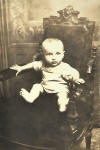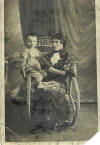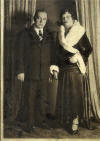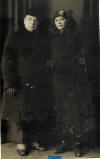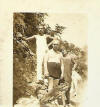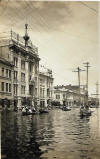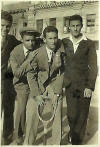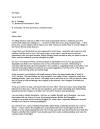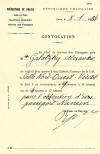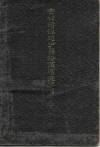 |
Harbin, Heilongjiang PROVINCE, China |
Harbin Documents and Photographs from the Galat (Galatzky) Family
Biography and photos courtesy of Bonnie and Suzanne Galat, daughters of Alexander Galat
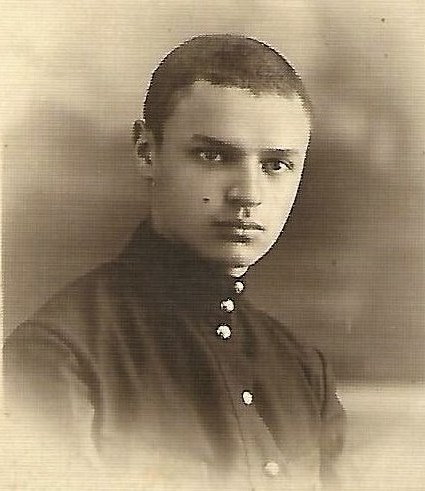
Alexander (Shura) Galatzky was born in 1912 in Poltava, Ukraine, then part
of the tzarist Russian Empire, and died in south Florida in 2005.
He was the only child of Benjamin and Nadia (nee Paltzeva) Galatzky.
At the time of the Bolshevik Revolution in 1917, Shura’s father was working
in the U.S. where he had a brother and a plan to send money to his wife, so
that she and his young son could join him there.
Unfortunately, amidst the chaos of the period, his hard-earned
savings were “lost” in transit, and Benjamin realized he could not spend
another few years saving sums to bring his wife and child to him. He decided
to reunite with them in Harbin, Manchuria, where an established Russian
community, including a Jewish community, had developed since the late 1800s.
Nadia, a young woman in her twenties
at the time, was left to her own devices to plan and negotiate the passage
for herself and their son.
Shura remembered the trans-Siberian train journey that took several months
and required his mother to barter the few rags and goods she carried and
plead with the various contingents of soldiers, revolutionaries,
opportunists for food and safe passage eastward.
In letters written later in life, Shura recounted how, at around the
age of 7, he and his mother arrived in Harbin and were reunited with
Benjamin after several years. Shura looked up and asked, “Are you my
father?”
Life in Harbin offered the Galatzky family some stability and gradual upward
mobility. Benjamin became a
bookkeeper for cattlemen. The pictures Shura kept from the period show a
nicely appointed apartment. Letters tell of being able to rent vacation
properties across the Sungari River.
Shura kept diaries throughout his school years in Harbin.
His entries speak of very normal boyhood concerns, friendships,
rivalries, crushes on girls, writing plays for the school theater club,
going to Betar meetings for Zionist youth and having the occasional run-in
with Russian nationalist youths. He received a solid education at the Harbin
Commercial School, had his Bar Mitzvah in the community, wrote poetry,
studied art and took piano lessons.
As his high school graduation approached in 1929, he and his parents had to
decide where he should go to university. In Shura’s diaries, he writes with
some sentimentality that all his friends were scattering across the globe
“forever”. Graduation pictures
show well-dressed classmates posing for professional photographers with
handwritten words of friendships to be cherished and remembered.
It was ultimately decided that Shura would travel with one of his close
friends, Boris Lesk, to Paris, France to study.
The two boys, 17 and 18 years old, left together from Dalian by boat
to Shanghai. They continued their journey over a couple of months in
steerage aboard a ship which was transporting French colonial soldiers to
various locations. Pictures, a
passport and a visa booklet record the boys passing through Ceylon,
Singapore, Hong Kong, Malaysia, Suez and finally Marseilles. From
Marseilles, they made their way north to Paris.
Shura spent 10 years in Paris, first learning French, then getting admitted
to the Institut de Chemie and ultimately earning a PhD in Chemistry in 1934.
During that time, he was unable to
travel back to Harbin to see his parents, who, following the Japanese
occupation of Manchuria in 1932, found their living conditions
deteriorating. At some point
thereafter, they make a decision to leave and resettle in the U.S.
Meanwhile, Shura was a stateless Russian Jew living in France on the
eve of the Nazi Occupation!
Luckily, he was able to get visa papers to the U.S. in 1938, leaving Paris
to join his parents in New York.
Once in the U.S., Shura became Alexander Galat and lived the “American
Dream.” He married Helen Grankin in 1940. They eventually had three children
and made their home in Westchester County, where Alexander worked in his own
laboratory and invented and patented processes and drugs which were sold to
the large pharmaceutical companies.
In addition to inventing the patient-friendly testing strips for diabetics
marketed as Clinitest by Miles Labs, other notable work included a novel
treatment for chronic urinary infections marketed as Urex and Hiprex by
Riker-3M, a synthetic caffeine process developed for Coca-Cola during World
War II, when caffeine was in short supply, an anticaries process for Procter
and Gamble. During several decades of work up until his death, he devoted
himself to perfecting injectable, soluble and transdermal aspirin.
His later years also included artistic creativity, and his unique oil
paintings on acrylic were exhibited in gallery shows in Florida.
Epilogue from daughter Bonnie Galat: My father’s 1929 Commercial High School
class held several reunions, all in Israel.
The first took place in 1970 and brought together at least 15 of the
Harbin “boys” who came from Australia, Japan, the U.S., France and Germany.
Pictures show them toasting each other and remembering their
professors, for whom my father wrote a poem to recognize a debt of gratitude
they all felt for having received a top-notch education in such a remote and
unlikely place as Harbin, Manchuria.
See Alexander Galat's Diaries from 1925 to 1929 translated in English at the bottom of this page.
Click on any image below for a larger version.
 |
 |
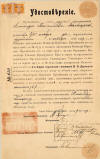 |
 |
|
Inside and outside pages of Alexander Galatzky’s 1929 graduation
certificate from the Harbin Commercial School. |
Alexander’s high school grade sheet showed his excellent marks. |
||
Travel Documents
 Front Cover |
 Pages 2 & 3 |
 Pages 4 & 5 |
 Pages 6 & 7 |
|
Visa document in Russian and Chinese for Alexander Galatzky, age 17. |
|||
|
AG Diary 1
1925-26.pdf Translated in English by Oxana Giannetti |
AG Diary 2
1927-28.pdf Translated in English by Oxana Giannetti |
AG Diary 3
1928-29.pdf Translated in English by Oxana Giannetti |
AG Diary 4
1929-31.pdf Translated in English by Iryna Chaika |
|
Alexander Galatzky Diaries 1925 to 1929 -- translated from Russian to English with explanatory footnotes |
|||
Web Page: Copyright © 2024 Irene Clurman

